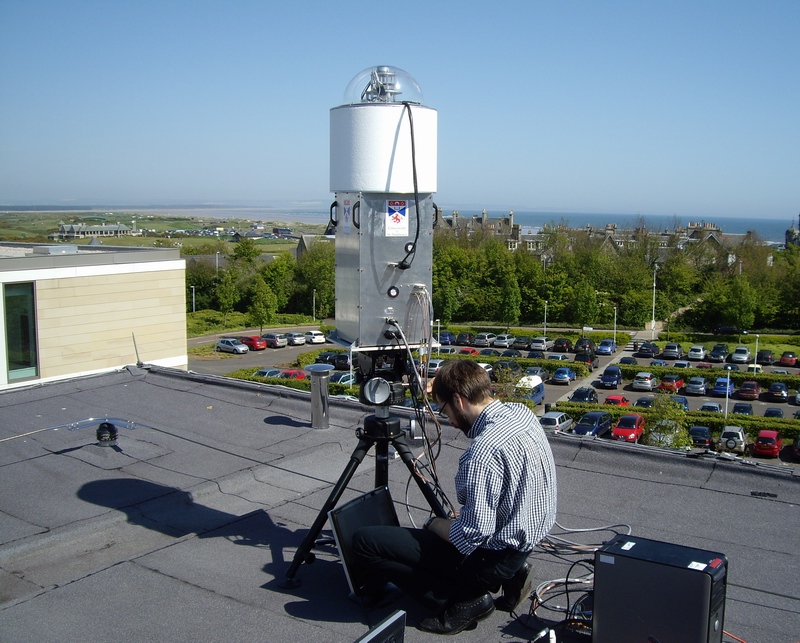Surveillance
The narrow beamwidths and high range resolutions available with millimetre wave radars make them attractive for surveillance applications, typically using 360° rotating antennas. We developed a 94 GHz radar called NIRAD which has a low phase noise, heterodyne FMCW architecture and scans a pencil beam through 360° of azimuth at frame rates of up to 10 Hz. The sub-degree beamwidth and 25 cm range bins yield high resolution plan position indicator (PPI) images of scenes over ranges from tens to hundreds of meters. The radar imagery is acquired at sufficiently high frame rate to be able to follow vehicles or people walking or running around the scene. The photo below shows NIRAD being tested on the roof of our building.

When used to gather surveillance data of a scene, for example to detect and track moving objects such as people, subtraction of the static background ‘clutter map’ is very effective as illustrated in this example which shows PPI images of a scene with a person, an empty scene and the resulting difference. Multiple people can then be tracked as they move around the scene.

NIRAD receives co- and cross-polarised signals simultaneously and analysis of the polarisation signatures can be used to identify the presence of large metallic objects in the scene, e.g. being carried by a person or in a bag. Trials sponsored by the UK Home Office demonstrated the success of this approach.